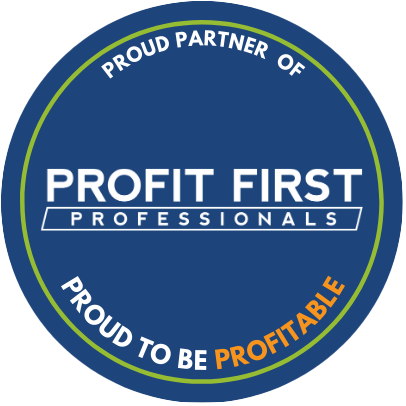Taking on Your First Business Debt: A Guide for Female Small Business Owners
Taking on debt is a pivotal decision for any small business owner. For many female entrepreneurs, the first business loan, line of credit, or financing agreement represents an opportunity to expand operations, invest in equipment, or manage cash flow during growth. However, debt is not a decision to take lightly—it’s a tool that can propel your business forward, but it also comes with risks.
Here are four critical factors to consider when taking on your first business debt. By approaching this process with clarity and caution, you can set your business up for success while minimizing potential setbacks.
1. Consider the Downside in Detail
When starting a business, it’s common to underestimate how much capital you’ll need. Many entrepreneurs create a budget based on best-case scenarios, only to find themselves scrambling when unexpected expenses arise. To avoid this pitfall, adopt a conservative approach and aim to have at least twice as much equity in reserve as you think you’ll need.
Why Businesses Often Underestimate Costs
It’s tempting to focus on the benefits of business debt, like the ability to purchase inventory, hire staff, or open a new location. However, it’s equally important to scrutinize the potential downsides.
Understand the Worst-Case Scenario
Before committing to debt, ask yourself: What happens if my revenue doesn’t meet expectations? If sales slow, would I still be able to meet my repayment obligations? Consider not only the possibility of a temporary setback but also the impact of more significant challenges, such as losing a major client or facing an economic downturn.
Assess Your Personal Liability
Many small business loans require a personal guarantee, which means you’ll be personally responsible for repayment if your business cannot cover the debt. This could put your personal assets, such as your home or savings, at risk. Be sure you’re comfortable with this level of exposure before signing.
Factor in Total Costs
The cost of debt isn’t limited to the interest rate. Additional fees—such as origination fees, penalties for early repayment, or variable rate increases—can add up. Fully understanding the total cost of borrowing ensures you won’t be caught off guard later.
2. Sensitize Your Revenue and Net Income Projections
When calculating whether you can afford to take on debt, it’s common to base your decision on optimistic revenue and profit projections. While it’s great to be hopeful, it’s equally important to prepare for less favorable outcomes.
Run “What-If” Scenarios
Sensitize your projections by running multiple scenarios:
- Best-case: Revenue and profits exceed expectations.
- Base-case: You achieve your most realistic estimate.
- Worst-case: Revenue falls short, expenses rise, or unforeseen challenges arise.
By analyzing how debt repayment fits into these different scenarios, you can determine whether it’s manageable under varying conditions. If your worst-case scenario leaves you struggling to cover loan payments, it might be worth reconsidering or seeking smaller amounts of debt. Don’t forget the desire to leave enough cash flow for distributions!
Include Debt Payments in Cash Flow Projections
Ensure that your repayment schedule aligns with your cash flow cycles. For example, if your business experiences seasonal revenue fluctuations, you’ll need to account for lower-income months when planning for debt repayment.
3. Consider Your Lender’s Incentive and Motivation
Not all lenders are created equal, and their motivations for offering you debt may not align with your best interests. Understanding your lender’s goals can help you evaluate whether their offer is the right fit for your business.
Traditional Lenders vs. Alternative Options
Banks and credit unions typically offer lower interest rates and transparent terms, but they may have stricter eligibility requirements. Alternative lenders, such as online lenders or private financing companies, may provide faster access to funds but often charge higher interest rates or include hidden fees.
Beware of Predatory Practices
Some lenders, especially those targeting small businesses, may downplay risks or offer terms that seem attractive at first glance but are unsustainable in the long run. For example, short repayment windows, high-interest rates, or steep penalties for late payments can create significant financial strain. Engage a trusted banker or an attorney to review any loan documents to ensure you fully understand the terms.
Ask Questions
When evaluating a lender, don’t hesitate to ask about their motivations, funding structure, and repayment expectations. A reputable lender should be transparent about their terms and willing to answer all your questions. If something feels unclear or too good to be true, trust your instincts and explore other options.
4. Don’t Factor Receivables Unless You’re Sure It’s the Right Option
Although this echoes point three, it merits a special call out. Accounts receivable—money owed to your business by clients or customers—can be an appealing source of collateral when taking on debt. Some lenders offer loans or lines of credit based on your receivables, while others provide invoice factoring, where they buy your unpaid invoices for immediate cash.
While these options may seem convenient, they come with risks and limitations.
The Risks of Factoring Receivables
Factoring invoices means giving up a portion of your receivables in exchange for quick cash. Fees can be high, sometimes eating into your profit margins significantly. Additionally, if your clients delay payment or default entirely, you may be responsible for covering the shortfall.
Evaluate Reputable Providers
If you decide to factor receivables, work only with reputable providers. Research their terms, read reviews, and check for any hidden fees or restrictions. Ensure the provider’s collection practices align with your business values to avoid damaging client relationships.
Understand Cash Flow Implications
Using receivables as collateral can help manage short-term cash flow needs, but it shouldn’t be relied upon as a long-term financing strategy. Before factoring receivables, ensure you have a plan to address the underlying issues causing cash flow shortages.
Final Tips for First-Time Borrowers
Taking on business debt is a significant step, and thoughtful preparation can make all the difference. Here are a few additional tips to keep in mind:
Build a Strong Business Credit Profile
A solid credit history can help you qualify for better loan terms. Pay your bills on time, keep your credit utilization low, and monitor your credit score regularly.
Start Small
If you’re new to borrowing, consider starting with a smaller loan to build your confidence and repayment track record. As your business grows and you become more comfortable with debt, you can explore larger financing options.
Consult a Trusted Banker
Before committing to debt, consult with a banker or accountant who can help you evaluate your options and create a repayment plan. Their expertise can provide valuable insights and ensure you’re making an informed decision.
Have a Backup Plan
Always have a contingency plan in place if things don’t go as expected. This might include cutting discretionary expenses, renegotiating payment terms, or tapping into emergency savings.
Taking on your first business debt is a major milestone, and it can be a powerful tool for growth when used wisely. By carefully considering the potential downsides, sensitizing your projections, understanding your lender’s incentives, and approaching receivables with caution, you can make informed decisions that support your business’s long-term success.
Remember, debt isn’t inherently good or bad—it’s all about how you manage it. With the right preparation, discipline, and resources, you can leverage debt to build a thriving business while safeguarding your financial stability. As a female entrepreneur, embracing this challenge with confidence and strategy will set you on the path to lasting success.
Other Resources to Explore

About the author:
Lauren Schellinger
VP/Regional Relationship Manager
Reach out:

